The be quiet! System Power 10 750W is an affordable 230V only power supply, with an MSRP of $75 or 80€, featuring Bronze efficiency and a Cybenetics Standard++ noise rating, meaning 30 to 35 dBA average noise output. Performance wise, it fails to impress.
The brand name be quiet! always give me a tough time in reviews because you will probably never imagine. To the best of my knowledge, this is the only brand whose name starts with a lowercase letter, so I have to avoid using its name at the start of sentences not to look weird! Ok, I said it, and I guess I should leave you some time to process it.
The System Power 9 PSUs were based on CWT (Channel Well Technology) platforms, while the 10th versions with up to 750W capacity use HEC platforms. There are no modular cables to reduce the production cost, and a sleeve-bearing fan is used, the same as the previous models. The similarities between the System Power 9 and 10 models with up to 750W capacity are the cooling fan and the chassis of the PSU. The essential changes, besides the platform, are the increased warranty (five vs. three years), the ribbon cables instead of the sleeved ones, the support for alternative low power modes, and the addition of 50W to every model (e.g., 750W vs. 700W).
The System Power 10 came in six flavors with 450, 550, 650, 750, and 850W max power. The first four are Bronze rated and use an older platform, while the 850W model is Gold rated. The 450 to 750W models have a single 12V rail, while the 850W unit has two. I need to ask be quiet! to send me the 850W for review because it looks attractive for $110 or 108€.
- Manufacturer (OEM): HEC
- Max Power: 750W
- Input Voltage: 200-240VAC
- Cybenetics Efficiency: [230V] Bronze (84-87%)
- 80 Plus Efficiency: Bronze
- Noise: Cybenetics Standard++ (30 – 35 dBA)
- Compliance: ATX12V v2.53, EPS 2.92
- Alternative Low Power Mode support: Yes
- Power 12V: 750W
- Power 5V + 3.3v: 130W
- Power 5VSB: 15W
- Cooling: 120 mm Sleeve Bearing Fan (D12SH-12)
- Semi-Passive Operation: No
- Modular Design: No
- High Power Connectors: 2x EPS (2x cables), 4x PCIe 6+2 pin (2x cables)
- Peripheral Connectors: 14x SATA (4x cables), 4x 4-pin Molex (single cable)
- ATX/EPS Cable Length: 540/590mm
- Distance between SATA/4-pin Molex connectors: 120mm
- In-cable capacitors: No
- Dimensions (W x H x D): 150 mm x 85 mm x 140 mm
- Weight: 1.97kg (4.34lb)
- Warranty: 5 years
Box & Bundle
Don’t expect to find fancy graphics on the box from the moment there is the word “essential” on the left side of the light-grey strip. I don’t mind the box design as long as it offers decent protection. There is only bubble wrap on the internals instead of packing foam, which is not ideal. Lastly, the bundle only includes a leaflet and four fixing bolts. No zip ties, case badges, or Velcro straps to keep the cost down.
Product Photos
The PSU’s exterior design is as plain as the internal. The dimensions are compact, while the cables are flat (ribbon), so they won’t block notable airflow.
Cables
| Captive Cables | ||||
| Description | Cable Count | Connector Count (Total) | Gauge | In Cable Capacitors |
|---|---|---|---|---|
| ATX connector 20+4 pin (540mm) | 1 | 1 | 18-20AWG | No |
| 4+4 pin EPS12V (590mm) | 1 | 1 | 18AWG | No |
| 8-pin EPS12V (600mm) | 1 | 1 | 18AWG | No |
| 6+2 pin PCIe (550mm+150mm) | 2 | 4 | 18AWG | No |
| SATA (570mm+120mm) / 4-pin Molex (+120mm) | 1 | 2/1 | 18AWG | No |
| SATA (460mm+120mm+120mm+120mm) | 1 | 4 | 18AWG | No |
| Modular Cables | ||||
| AC Power Cord (1390mm) – C13 coupler | 1 | 1 | 18AWG | – |
Two EPS and four PCIe connectors are installed on cables with decent lengths. It would be ideal if the ATX cable measured 600mm in length and the EPS were close to or above 650mm. The distance between the peripheral connectors is low, at 120mm. Finally, there is only one PATA (4-pin Molex) connector. There should be two, at least. Apparently, be quiet! didn’t want to use many cables in a non-modular PSU, but only one PATA connector can be a problem for some users.
Protection Features
|
OCP (Cold @ 26°C) |
12V: 81.2A (129.92%), 11.859V, Ripple: 183.5mV |
|
OCP (Hot @ 41°C) |
12V: 81.2A (129.90%), 11.871V, Ripple: 183mV |
|
OPP (Cold @ 27°C) |
912.16 W (121.62%) |
|
OPP (Hot @ 42°C) |
894.16W (119.22%) |
|
OTP |
✓ (100°C @ 12V Heatsink) |
|
SCP |
12V to Earth: ✓ |
|
PWR_OK |
Proper operation |
|
NLO |
✓ |
|
SIP |
Surge: MOV |
OCP at 12V is not set correctly since it allows for excess ripple on this rail. The minor rails have sky-high OCP triggering points, which might not affect their performance but can create reliability problems. OPP is set correctly under cold and hot conditions, and OTP is set low, but I didn’t encounter any issues during high-temperature testing. Lastly, as expected, there is no bypass relay for the NTC thermistor responsible for inrush current protection.
Part Analysis
| General Data | |
| Manufacturer (OEM) | HEC |
| PCB Type | Single Sided |
| Primary Side | |
| Transient Filter | 4x Y caps, 2x X caps, 2x CM chokes, 1x MOV, 1x Power Integrations CAP200DG (Discharge IC) |
| Inrush Protection | 1x NTC Thermistor SCK-2R58 (2.5Ohm) |
| Bridge Rectifier(s) |
1x MCC GBU8K (800V, w/o heatsink)
|
| APFC MOSFETs |
2x Great Power GPT18N50D (500V, 18A, Rds(on): 0.27Ohm)
|
| APFC Boost Diode |
1x STMicroelectronics STTH8R06FP (600V, 8A @ 85°C)
|
| Bulk Cap(s) |
1x Teapo (400V, 470uF, 2,000h @ 85°C, LH)
|
| Main Switchers |
2x GPT22N50SYX
|
| PFC / PWM Combo Controller | Champion CM6800TX |
| Topology |
Primary side: APFC, Double Forward
Secondary side: Synchronous Rectification & DC-DC converters |
| Secondary Side | |
| +12V SBRs | 2x CHONGQING PS30U60CT (60V, 30A @ 90°C) & 4x PFC PFR40V60CT (60V, 40A @ 100°C) |
| 5V & 3.3V | DC-DC Converters: 7x Excelliance MOS EMB07N03V (25V, 97A @ 100°C, Rds(on): 1.4mOhm) PWM Controllers: 2x ANPEC APW7164 |
| Filtering Capacitors | Electrolytic: 10x Teapo (1-3,000h @ 105°C, SC), 2x Nichicon (4-10,000h @ 105°C, HE), 1x Nippon Chemi-Con (4-10,000h @ 105°C, KY), 1x Teapo (1,000h @ 105°C, SEK) Polymer: 3x Teapo |
| Supervisor IC | Weltrent WT7527RT (OCP, OVP, UVP, SCP, PG) |
| Fan Model | Yate Loon D12SH-12 (120mm, 12V, 0.30A, Sleeve Bearing Fan) |
| 5VSB Circuit | |
| Rectifier |
1x MOSPEC S10M60C SBR (60V, 10A)
|
| Standby PWM Controller | Power Integrations TNY289PG |
This is an old platform featuring DC-DC converters to meet today’s demands. Despite the small PCB, there is enough space between parts for decent airflow, especially on the secondary side, where it matters the most. The single bridge rectifier doesn’t need a heatsink since this PSU is for 230V only. Hence it will handle low amperes. The soldering quality is decent for an affordable product. The bulk cap is rated at 85°C since it won’t get much stress, with 230V. If this PSU were destined for 100-115V grids and hot environments, I wouldn’t go with an 85°C rated bulk cap.
On the secondary side, HEC used SBRs from a brand I had never met. The filtering caps on the secondary side are decent, although I am not a big fan of Teapo SC caps. Lastly, the Yate Loon fan could be replaced with a better fan by Hong Hua. I don’t like Yate Loon fans, either.
Load Regulation
Despite the native cables, which help, load regulation is loose!
Ripple Suppression
Ripple suppression is terrible, especially at 12V!
Transient Response
Given the results so far, I expected to see a terrible transient response, but the 12V rail played nicely here. The other rails met my expectations, though, with mediocre performance.
Hold Up Time
To my surprise, the hold-up time meets the ATX spec’s requirements! Using a cheap 85°C bulk cap has its perks.
Timings
The PSU supports Alternative Low Power Modes.
Inrush Current
The inrush current is low.
Efficiency Normal, Light & Super-Light Loads
Efficiency is not close to the results of other Bronze units using older platforms, like the XPG Pylon 750W and the Thermaltake Smart BM2.
Average Efficiency 5VSB
The 5VSB rail is not efficient.
Vampire Power
Vampire power should be close to or below 0.1W, with 230V input.
Average Efficiency
The average efficiency cannot meet the competition from XPG and Thermaltake mostly, which use similar spec platforms.
Average PF
The PF results are average.
Average Noise
Given the platform’s old design, the not top-quality caps, and the unknown SBRs on the secondary side, I wouldn’t feel comfortable with a more relaxed fan speed profile. That said, this PSU doesn’t live up to what I expect from a brand named be quiet!
Fan Noise & Speed Maps @ 28-32 °C
We have some nice graphs here, which don’t look like the canvas of a messed-up artist. Up to 320W, you are in the low noise zone. With more than 390W, the PSU exceeds 30 dBA. With 490W, it goes over 35 dBA, and with 90-95W more, it enters the 40-45 dBA zone.
Overall Performance
Using my new scoring algorithm, which considers all crucial factors, the System Power 10 is left notably behind by the competition. be quiet! needs to push more in this category. The previous generation System Power units met competition offerings eye-to-eye, but the new generation cannot do that.
Epilogue
So far, I used to recommend the System Power 9 units to users needing a good and affordable PSU. This means that I expected much from System Power 10, only to be disappointed. The outdated HEC platform fails to impress (big time), despite the new touches like the VRMs and the ALPM support. This platform is not strong enough to fight the popular CWT CSB used by Thermaltake (Smart BM2) and the XPG Pylon. If be quiet! wants to stay in the game in markets outside Germany, it should focus more and offer higher-performance products. The competition got intense, and a good name alone isn’t enough to meet it. Besides Corsair, other brands have become highly competitive in the PSU market, hiring experienced engineers and cooperating closely with labs like Cybenetics to improve their products. The overall performance graph clearly shows this.
If I had a not-recommended badge, I would use it in this review. Sorry, be quiet! but when I wear my reviewer’s hat, I am cruel! You should look at the Thermaltake Smart BM2, Corsair CX750M, and the XPG Pylon 750 instead, which have similar price tags with the System Power 10 750W while offering way more in terms of performance and build quality.
Buy Thermaltake Smart BM2 750W
Buy Cooler Master MasterWatt 750
- Full power at 41°C
- Decent soldering quality
- Good enough transient response at 12V
- Long hold-up time
- Accurate power ok signal
- Low inrush current with 230V input
- ALPM support
- Compact dimensions
- Flat cables
- 5-year warranty
- Low overall performance
- Poor performance per price ratio
- Noisy (>35 dBA) with 490W and above loads
- Not properly set OCP at 12V
- Not as efficient as other similar spec platforms
- Loose load regulation
- High ripple on all rails
- Sky-high OCP on the minor rails
- Not efficient 5VSB rail
- Only one 4-pin Molex connector
- Short distance between the peripheral connectors
- The competition uses better cooling fans and parts in general
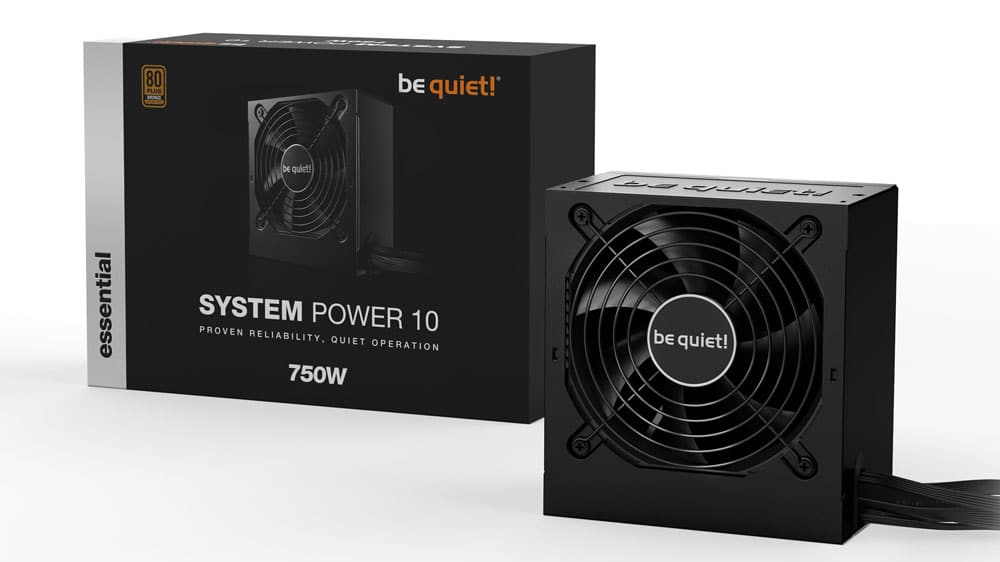
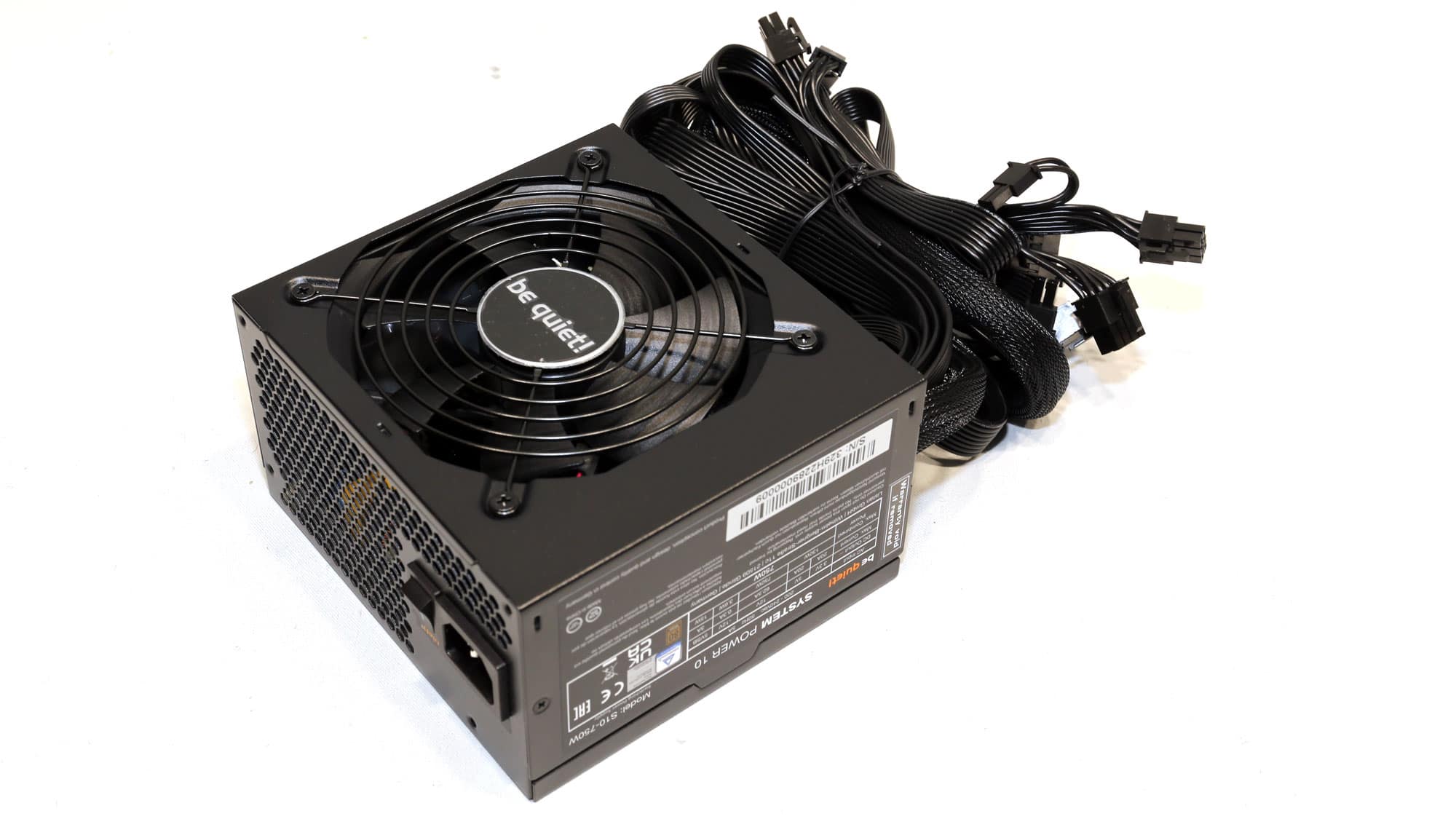

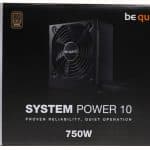
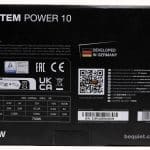

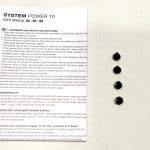

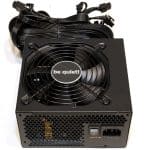
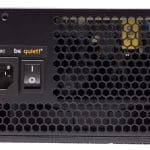
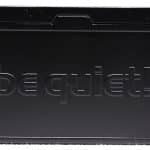
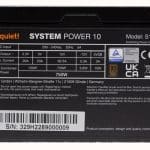
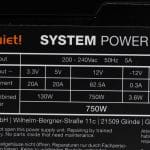
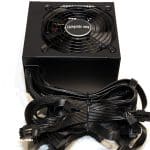
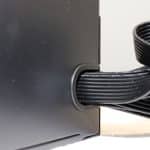
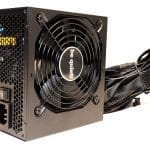
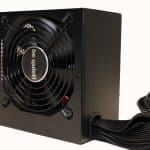
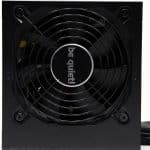
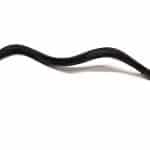
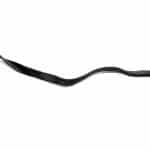
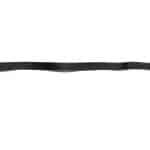
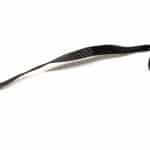

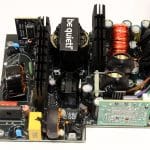
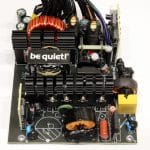

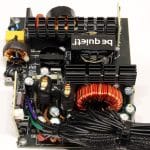


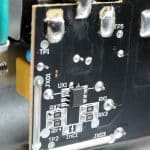
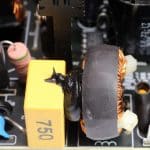
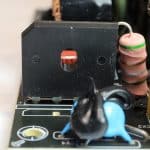
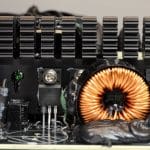
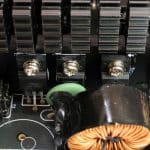

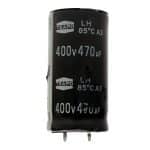

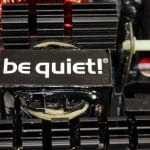
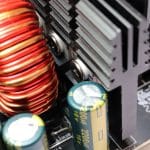
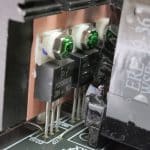
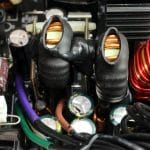

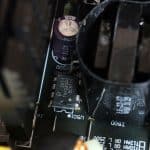
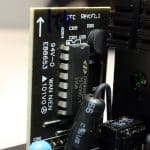
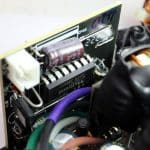
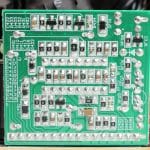
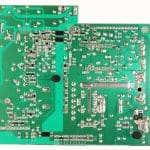
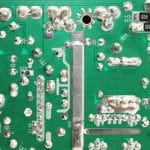
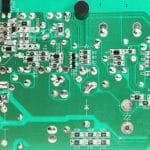
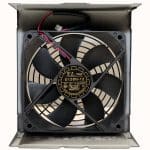
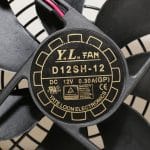

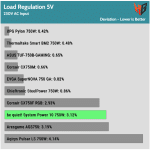
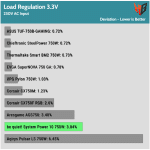
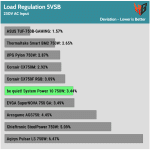
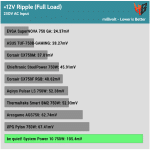
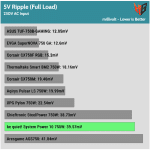
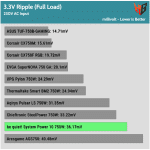
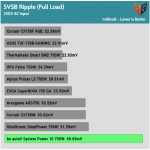
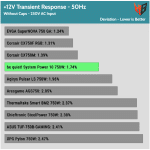
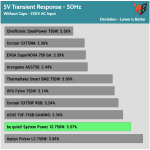




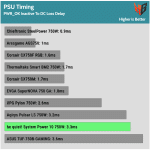
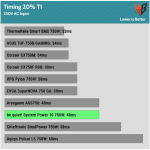
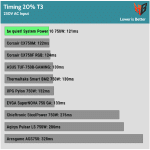
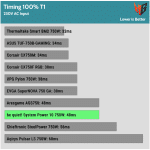
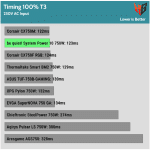
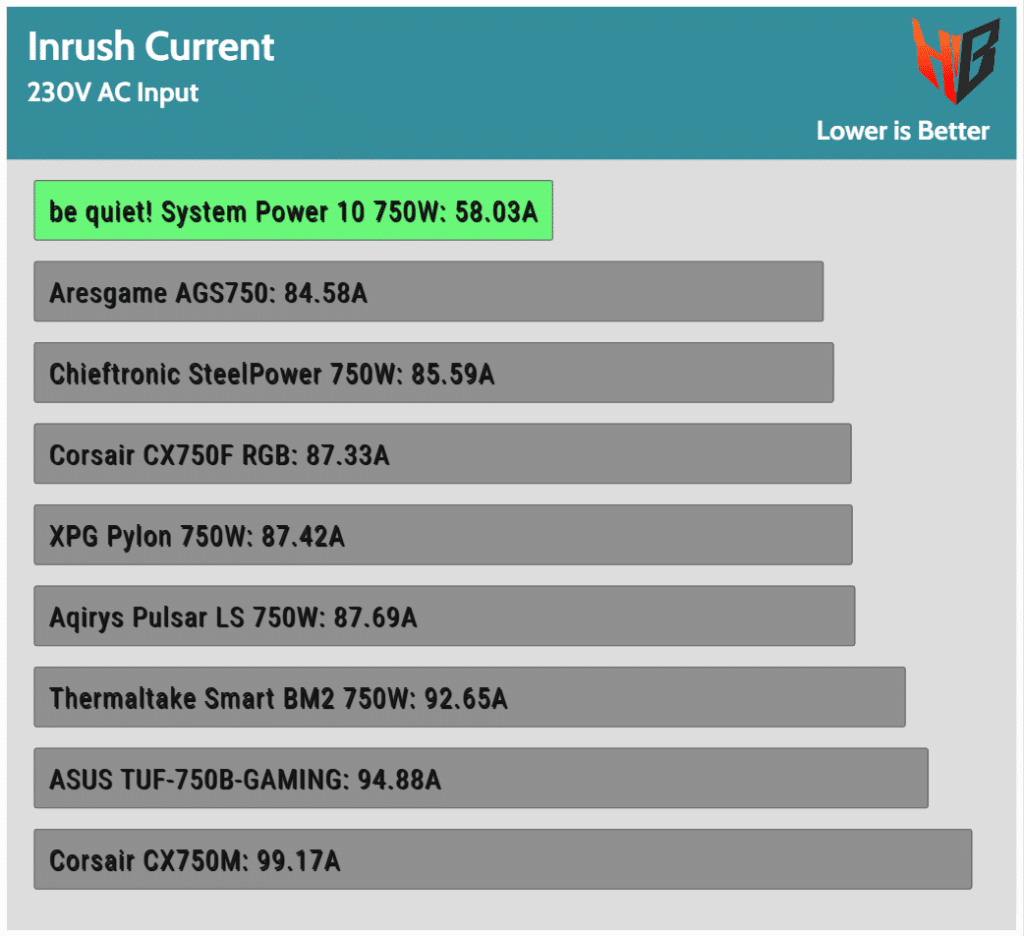

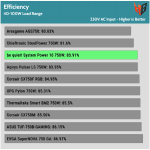
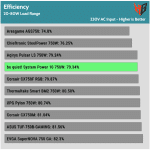
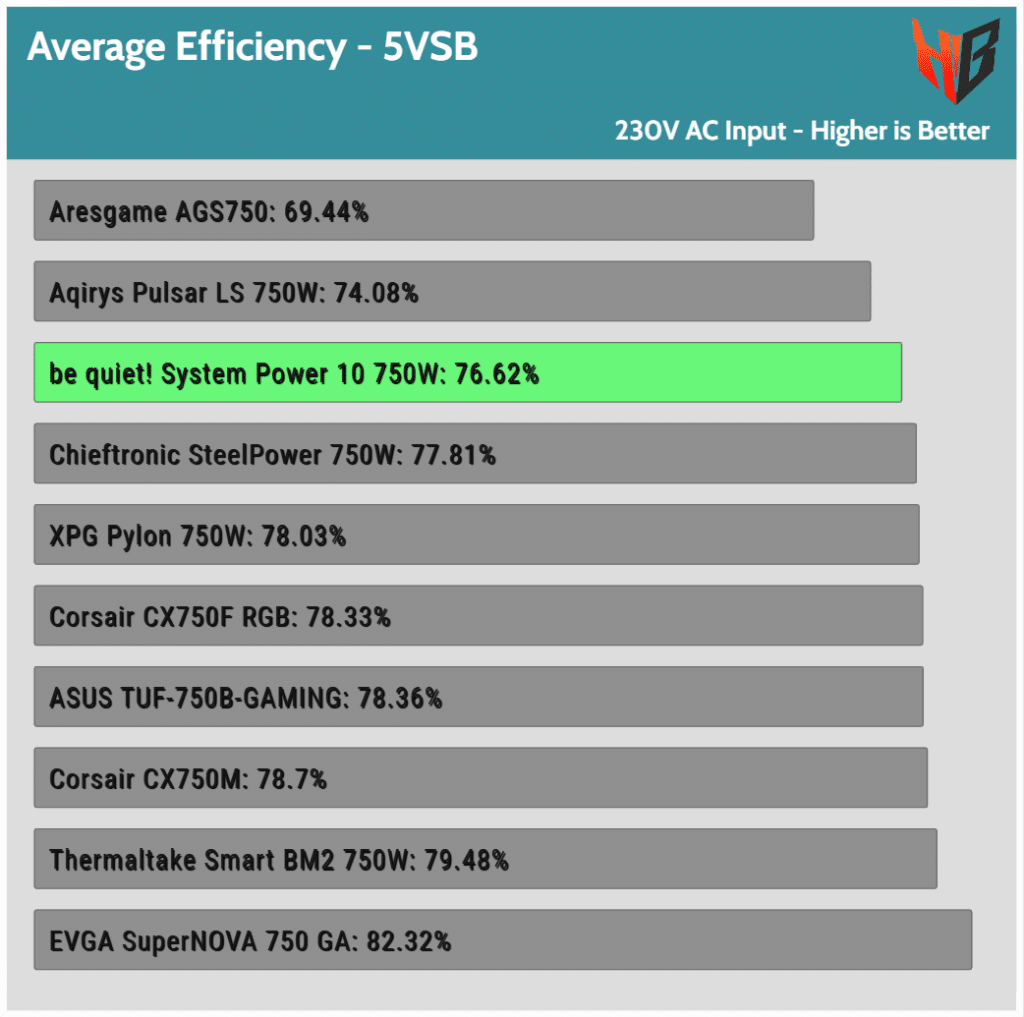
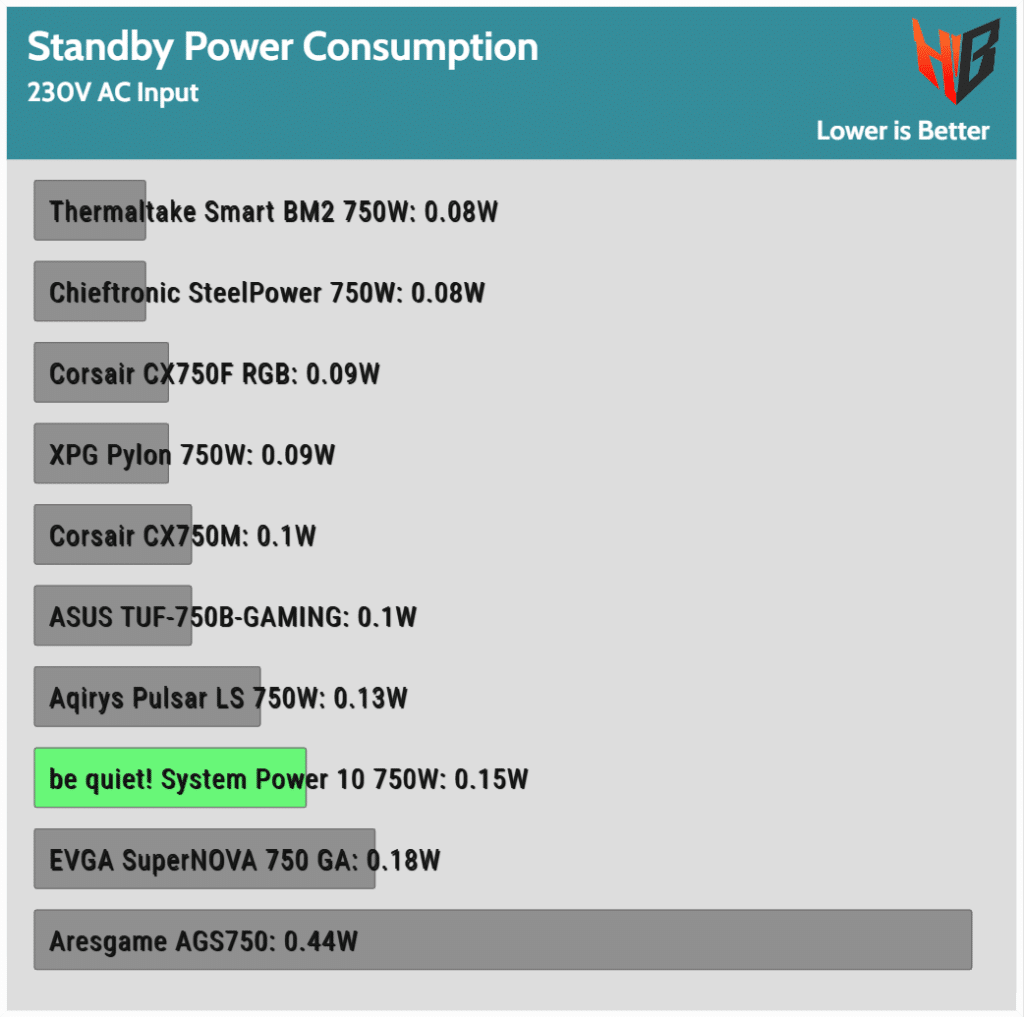
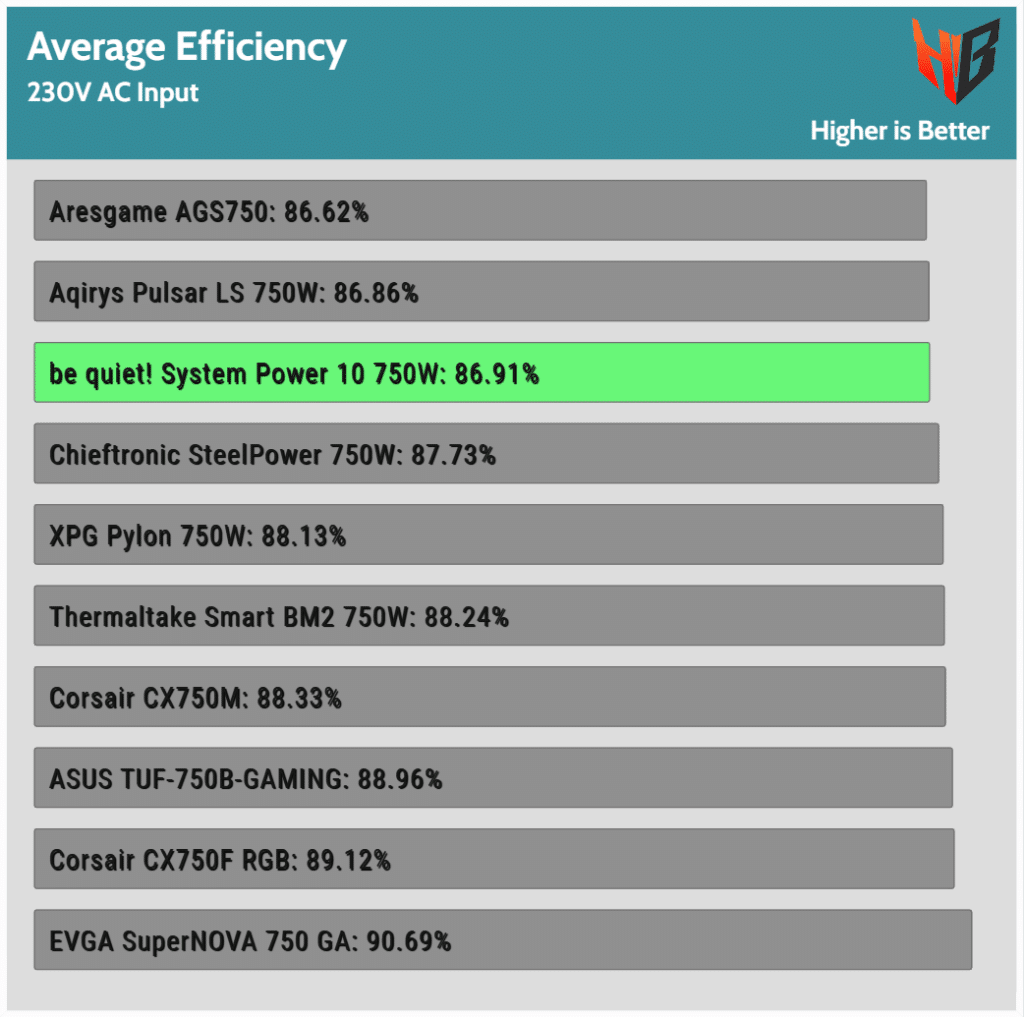
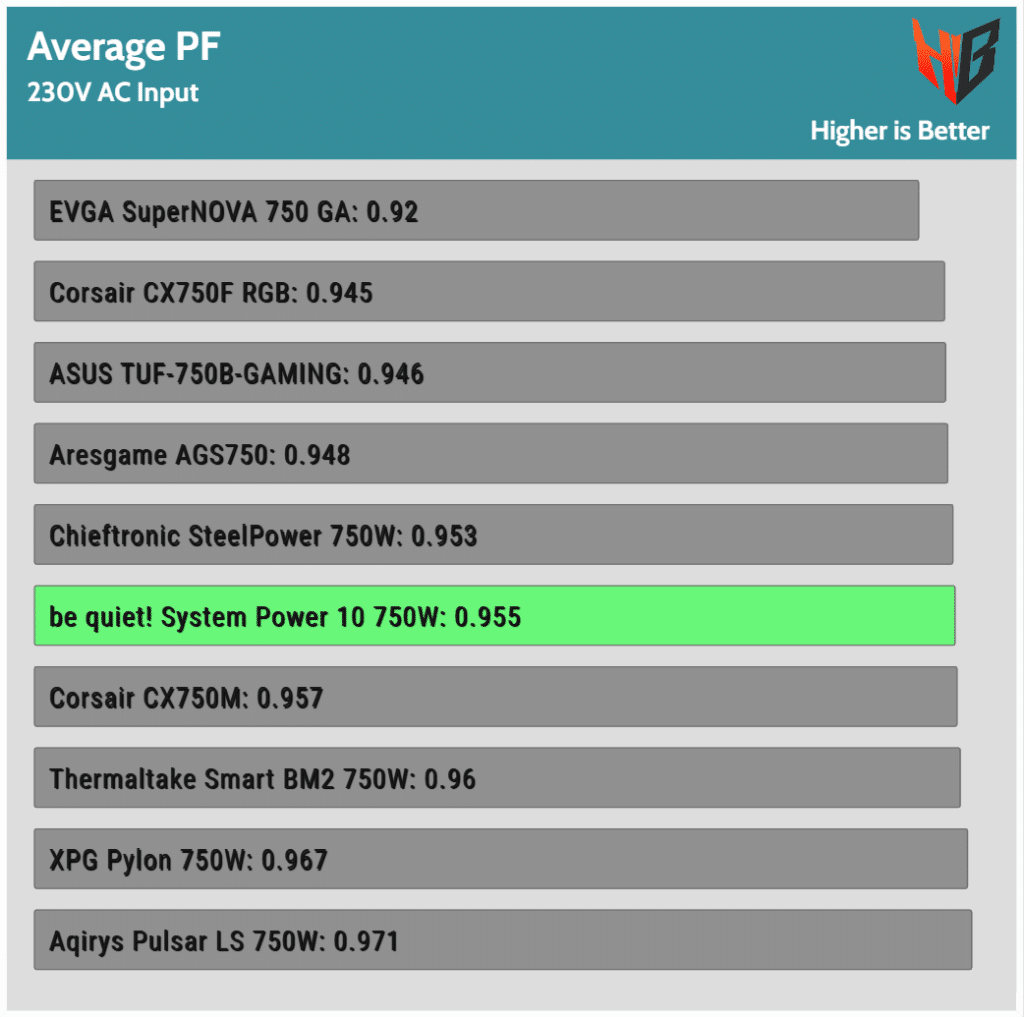


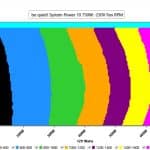
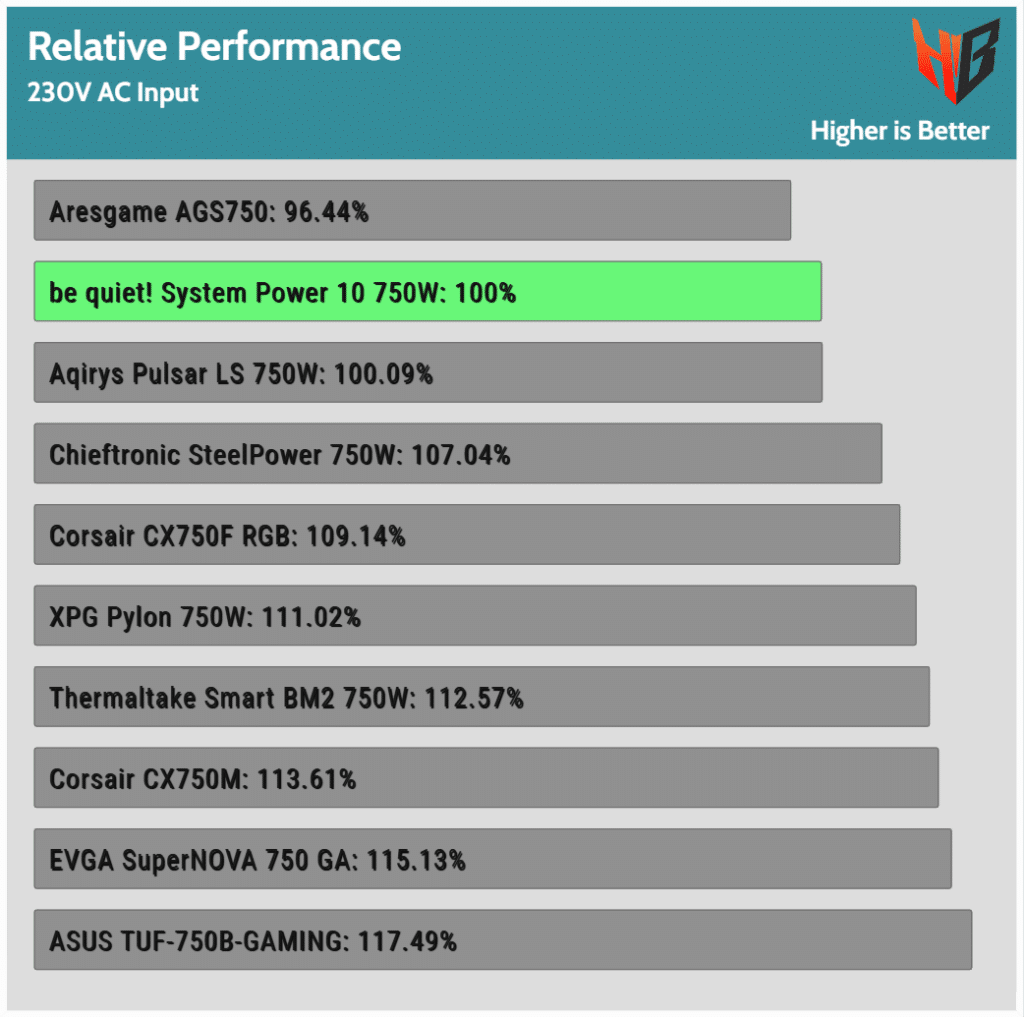
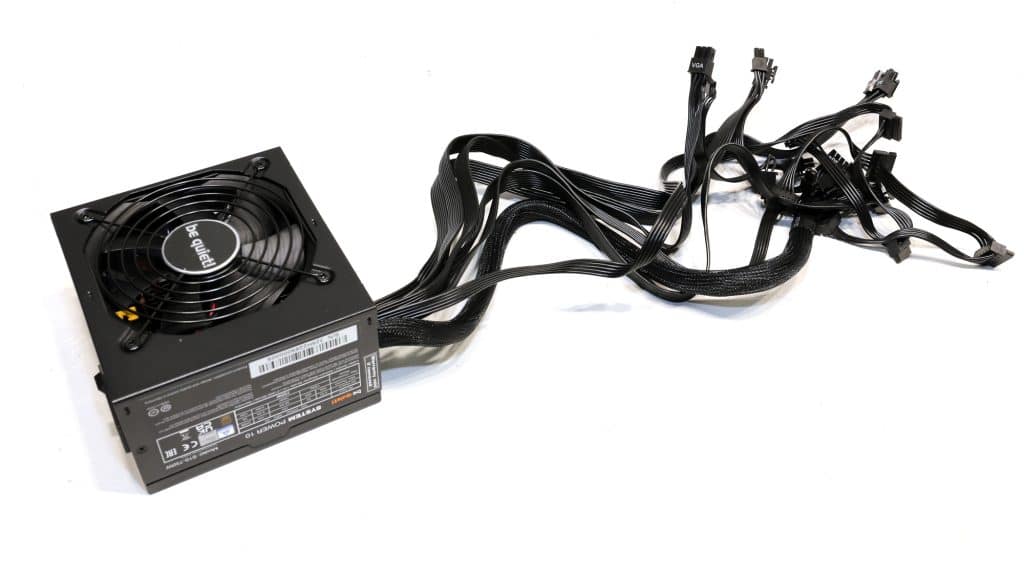

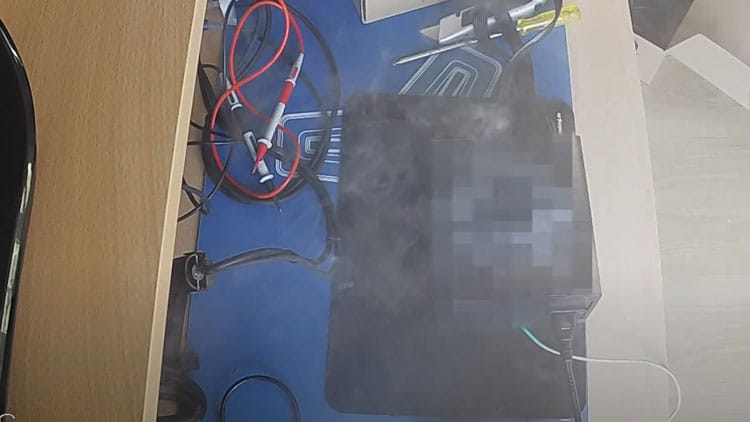
The ripple suppression is high, but this is in full load of the psu right? Meaning that if you don’t overload it much but keep it at 20-40% of load you’ll be in the safe zone.
Correct!
I was originally going to get a Be Quiet System power, but then I read this review and started looking at the Thermaltake Smart BM2 instead, as recommended… But the Amazon reviews are telling a completely different story than this review, with pages upon pages of horror stories of PCs destroyed and set on fire by the Smart BM2. I understand that it is hard to judge the long-term reliability of a PSU during a single review session, but this information had already been out there on Amazon, and would have been useful to be incorporated in the recommendations.
You cannot base your buying preferences on Amazon because there are tons of info out there on fake reviews or on inexperienced users who destroy hardware and say that it was the hardware’s fault. So my reviews are based only on the data I get with my equipment. I push all PSUs extra hard, so if they don’t explode in our hands, they are ok unless there is a change in production.